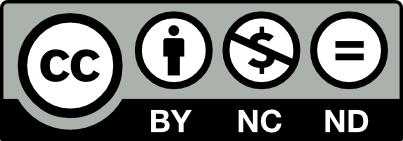This page is licensed under Creative Commons under Attribution 4.0 International. Anyone can share content from this page, with attribution and link to College MatchPoint requested.
5 Myths About Preparing for Future Careers When You Build Your College List
When planning for college, it’s easy to feel overwhelmed by conflicting advice about choosing a major, preparing for a career, or even understanding the job market. Many families base their decisions on assumptions that no longer reflect the realities of today’s economy. Let’s tackle five common myths about preparing for future careers when building a college list—and share actionable strategies to help your student thrive.

Myth #1: The Right College Major Guarantees a Job
One of the most persistent myths is that picking the “right” major ensures a lucrative career. While some fields, like nursing or engineering, do have clear pathways, many growing industries—such as data science, digital marketing, and UX design—prioritize skills over specific degrees.
Reality:
Employers increasingly seek candidates with adaptable, in-demand skills that may be gained outside of a traditional major. Encourage your student to explore minors, electives, and certifications that complement their degree. For example, a communications major with a Google Career Certificate in digital marketing can appeal to employers looking for a blend of creativity and tech-savviness.
Myth #2: Traditional Four-Year Degrees Are the Only Option
For decades, families have considered a four-year degree the gold standard of career preparation. However, as industries evolve, alternative pathways—like bootcamps, apprenticeships, and micro-credentials—are emerging as viable options.
Reality:
Nontraditional programs often provide targeted, job-ready skills in a fraction of the time. While college remains a valuable investment for many careers, students can benefit from combining their degree with shorter, focused programs. For instance, a student pursuing a degree in computer science might attend a coding bootcamp to learn cutting-edge programming languages.
Myth #3: Career Preparation Starts After Graduation
Some families assume that career readiness begins once the student finishes college. This mindset can leave graduates unprepared for the competitive job market.
Reality:
Career preparation should begin in high school and continue throughout college. Look for colleges that emphasize hands-on learning through internships, co-op programs, or research opportunities. Schools like Northeastern University and Drexel University are known for integrating real-world experience into their curricula, giving students a significant edge in the job market.
Myth #4: High-Paying Careers Are Only in Tech or Medicine
While technology and healthcare often dominate conversations about high-paying jobs, many fast-growing careers exist outside these fields. Creative industries, for example, are experiencing rapid growth due to demand for digital storytelling and video production.
Reality:
Encourage your student to research diverse fields and industries. Creative roles like graphic design, digital content creation, and social media management are expanding, offering exciting opportunities for students with strong portfolios and technical skills. Colleges with robust arts and media programs, such as the Savannah College of Art and Design (SCAD), can prepare students for these dynamic careers.
Myth #5: A College’s Prestige Matters More Than Fit
Many families believe that attending a highly ranked or prestigious university is the best way to secure a successful career. While a school’s reputation can open doors, it’s not the only factor that matters.
Reality:
Fit is far more important than prestige. Students thrive in environments that align with their learning styles, interests, and goals. A well-chosen school that offers personalized career support, mentorship, and networking opportunities can lead to better outcomes than attending a top-ranked university that doesn’t feel like the right fit.
How to Build a Future-Focused College List
To help your student prepare for future careers, focus on colleges that:
- Offer flexible and interdisciplinary programs that allow students to combine majors, minors, and certifications.
- Prioritize experiential learning through internships, co-ops, and research opportunities.
- Provide strong career services, including alumni networking, resume workshops, and job placement support.
- Emphasize
skills-based learning, such as coding, data analysis, and project management.


